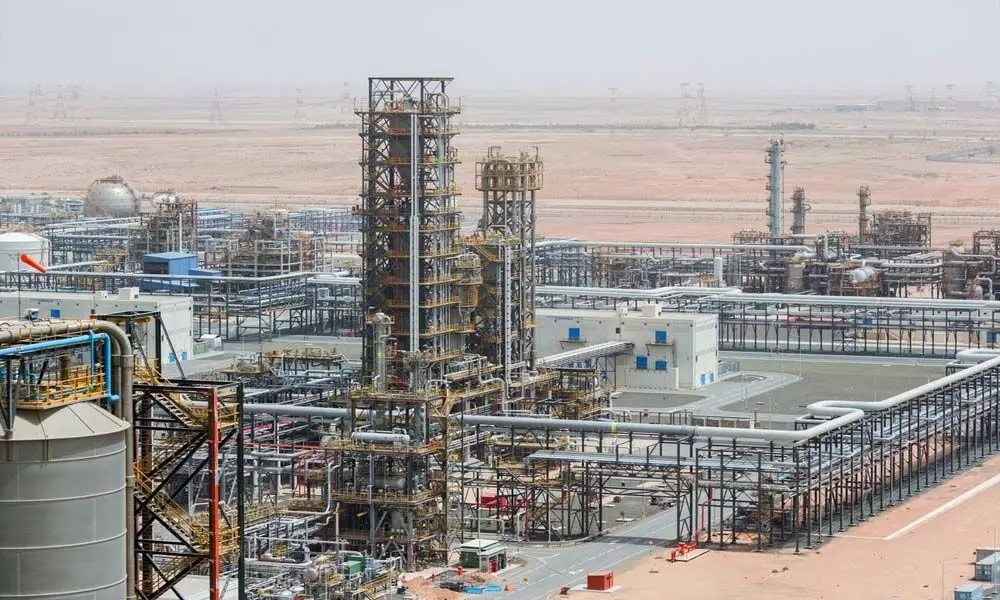Even if UAE and OPEC+ make up, it won't last
Once the shock of Covid-19 passes, a structural problem will reemerge; namely that the world has an abundance of oil but a shortage of capacity to absorb emissions from that oil
image for illustrative purpose

The United Arab Emirates (UAE) is reportedly patching things up with OPEC+. Even if it does, the relationship is doomed.
Just as the last OPEC+ meeting was breaking up in acrimony earlier this month, BP Plc released its annual numbers-fest, the Statistical Review of World Energy. Observing that OPEC+ had stepped in to stabilize oil prices last year, Spencer Dale, the company's chief economist, added:
... Whether this means it will always be able to do so depends on the type of shock affecting oil markets. The nature of OPEC's power to shift supply intertemporally from one period to another means it has the ability to offset temporary, short-lived shocks.
OPEC+ is a relatively blunt instrument. It can withhold oil to address excess supply and support prices, or "shift supply intertemporally" in Dale's phrasing. OPEC+ did this beginning in 2017 to reduce bloated oil inventories. It did it again last year in response to the pandemic.
This is why, even if the UAE and OPEC+ reengage now, they will still pull apart over time. Once the shock of Covid-19 passes, a structural problem will reemerge; namely that the world has an abundance of oil but a shortage of capacity to absorb emissions from that oil.
The world used about 173 billion barrels over the past five years, according to BP's figures. Proven reserves still increased slightly, hitting 1.73 trillion barrels at the end of 2020. Even if demand increased in a straight line from 96.5 million barrels a day this year to 150 million a day in 2040, reserves would cover that almost twice over.
Except, of course, even the most bullish forecasts don't have demand growing at anything like that, partly because of what it would mean for emissions. The last set from the International Energy Agency projected demand at 101 million barrels a day by 2040 - unless the world goes full net-zero, in which case demand gets cut in half. So there's plenty of oil to be had - and at a reasonable price: Rystad Energy, a consultancy, estimates 1.3 trillion barrels could be produced at an average real Brent price of $50 each.Brent traded at around $74 on Friday.
Any oil producer with a lot still in the ground, the wherewithal to boost production and the ability to live with lower prices would be crazy to hold back forever. In a recent report comparing OPEC+ to the old International Tin Agreement - which collapsed in 1985 because of cheaper supply and substitution (sound familiar?) - energy economist Philip Verleger calculated the hit to members if they opened the taps and oil fell to $40. The most resilient, losing 14 per cent of its take, was the UAE. Similarly, the UAE enjoys the lowest fiscal breakeven cost of any OPEC member in 2021, at $65 a barrel and heading lower.
OPEC+ is ever more divided in terms of capabilities and needs. It is tough to imagine a club hosting both the UAE and Venezuela - the former's gross dometic product per capita being 127 times the latter's - navigating the twilight of the oil age nimbly and cohesively.
Of 23 members, 15 sport GDP per capita below the emerging-market average of about $11,000; 11 suffered a decline in that metric over the past decade (pre-Covid); and 14 saw their oil output peak more than a decade ago. Six members, accounting for roughly a sixth of spare capacity, hit this dubious trifecta.
Meanwhile, only four display none of those three weaknesses: Bahrain, Russia, Saudi Arabia and the UAE. Together, they hold more than half of OPEC+ capacity, both total and spare. Bahrain, however, is too marginal to matter. Russia, meanwhile, isn't a member of the old OPEC group. And with its floating ruble cushioning against weaker oil prices, it will likely abandon production targets when it suits - as it was ready to do before Covid-19 hit. That leaves just Saudi Arabia and the UAE, both of which are preparing for a world of peak oil demand, but with the latter displaying more nimbleness and resolve.
In its recent net-zero "roadmap", the IEA calculated that average per capita income from oil and gas sales for producer economies would drop to 1990s levels this decade and around half that in the 2030s. Maybe such projections are, as Saudi Arabia says, like living in "La La Land." The more salient point is that most of OPEC+ can barely manage the current reality; just La La-ish Land would be hell for them.
This is why expectations of national oil companies stepping in to fill the gap as Western majors restrain investment should be tempered. Many state oil champions struggle just to maintain production on their home turf, let alone conquer the world. As oil demand peaks and falls, some nominally low-cost petrostates will more likely shrink output because of economic disruption. Recall that much of OPEC+ "discipline" in its first couple of years was really just the agony of Venezuela playing out.
Meanwhile, the haves will boost production, most likely by loosening nationalist constraints on foreign investment, something the UAE is ahead on, too. OPEC and its successor were formed for a world in which oil demand only rises and reserves are like money appreciating in the bank. As the world changes, those members able to do so will cash in and check out. (Bloomberg)

